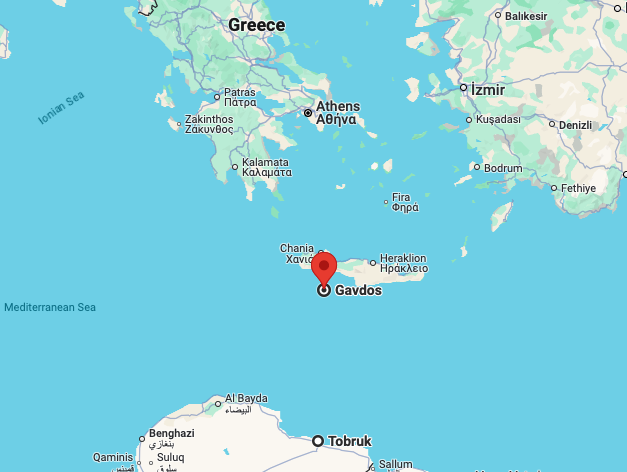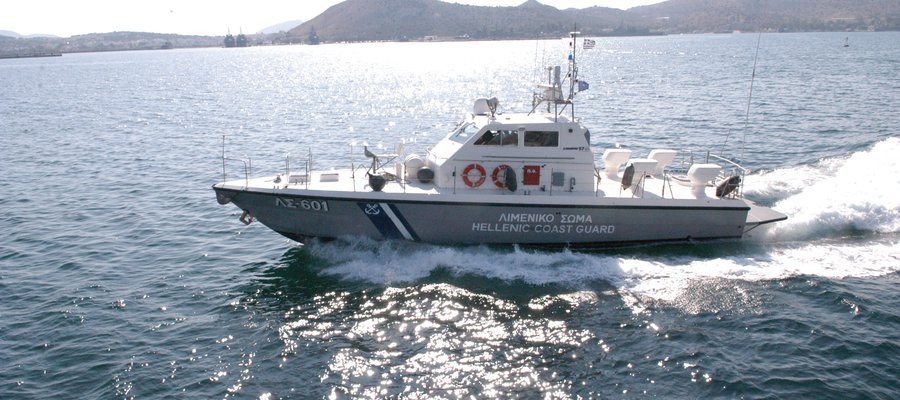Greek coast guard officials report that more than 500 migrants were rescued near the island of Crete in recent days, reflecting an increasing number of crossings from North Africa to southern Greece.
As migration routes shift across the Mediterranean, Crete has emerged as a new hotspot. Greek authorities have rescued more than 500 migrants off the southern island of Crete in recent days, according to a statement released by the coast guard on Sunday, May 25. This increase in arrivals highlights Crete’s emergence as a major new entry point into Europe for people fleeing war and poverty in Asia, Africa, and the Middle East.
On Saturday alone, around 280 people -- including 13 minors -- were rescued from five separate shipwrecks. Most of those rescued were men, many of whom reported setting sail from Libya. According to their testimonies, they paid between 150,000 and 200,000 Egyptian pounds (approximately 3,000-4,000 US dollars) for the dangerous journey. Among those rescued, a 24-year-old Sudanese man suspected of smuggling was arrested and has since been prosecuted under Greece's harsh anti-smuggling laws.
Read AlsoGreece: 20 suspected smugglers arrested
Shifting migration routes
In total, some 543 migrants have arrived on Crete since Thursday, underscoring a shift in migration routes. The journey from Tobruk, Libya -- around 180 nautical miles from southern Crete -- has become one of the most perilous corridors in the Mediterranean. According to the NGO Refugee Support Aegean (RSA), boats making this crossing are often overcrowded, in poor condition, and lack food, water, and life-saving equipment. Migrants typically spend two days at sea with no basic provisions.

A particularly deadly incident occurred on December 13, 2024, when a boat sank southwest of Gavdos, a small island south of Crete. At least eight bodies were recovered and over 35 people, including children, are still missing and presumed dead. Only 39 individuals were rescued from that wreck, and several were hospitalized.
Greek authorities report that boats departing from Tobruk frequently enter Greek waters before sending out SOS signals, prompting rescue operations by the Hellenic Coast Guard.
Read AlsoGreece: More than 200 migrants arrive on Crete in last week
Disproportionate burden on frontline states
The path from Tobruk to Crete is now becoming the central refugee corridor to Greece, surpassing other Greek islands in migrant arrivals this year. According to the union of water police officers in Crete, approximately 5,100 people reached the island in 2024, and over 4,000 have arrived already this year alone. The union expressed concern that these numbers could rise significantly during the summer months, when calmer seas make the crossing more feasible.

The coast guard estimates that thousands of people are currently waiting in Tobruk to attempt the crossing. As of May 18, a total of 11,305 migrants had arrived in Greece by sea this year, according to the UN refugee agency UNHCR, with Crete accounting for nearly one-third (3,471) of those arrivals. For comparison, approximately 54,000 people arrived by sea in all of 2024.
Under the European Union’s asylum regulations, refugees are required to apply for asylum in the first EU country they enter. This rule places a disproportionate burden on frontline states such as Greece and Italy. The Greek government has repeatedly called for a fairer distribution of asylum seekers across the EU and is pushing back against Berlin’s proposals to return refugees to Greece if they had previously been granted asylum there.
Read Also Migrant arrivals to Crete increase sharply from Libya
In the shadow of the Pylos shipwreck
Meanwhile, the legacy of Greece’s deadliest maritime disaster continues to cast a shadow. Seventeen members of the Greek coast guard are now facing criminal charges in connection with the June 2023 sinking of the Adriana trawler off the coast of Pylos. The vessel, rusted and overloaded, was carrying more than 750 refugees. Only 104 survived, and just 82 bodies were recovered.
According to lawyers representing survivors and victims through six human rights organizations, the coast guard failed to respond adequately despite multiple distress alerts from the EU border agency Frontex and the NGO Alarm Phone.
The charges involve high-ranking officials, including the then-head of the coast guard, the captain involved in the operation, the head of the state search and rescue center, and two officers responsible for maritime safety. Dozens of survivors have filed a class-action lawsuit, alleging that the coast guard delayed its response for several hours, contributing to the catastrophic loss of life.
Read AlsoGreek lawyers demand further inquiry into 2023 shipwreck, which cost hundreds of lives
With AFP and dpa
